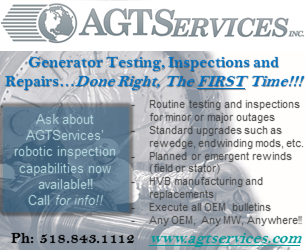What do you do when your gas turbine experiences a forced outage (FO), or as Sulzer’s Jim Neurohr and Michael Andrepont put it, a “bump in the night”? Hopefully, your plant already has a plan in place for such emergencies, and they hope you’ll call Sulzer and let them put their full-service shop in LaPorte, Tex, to work on your behalf.
The underlying message of the webinar, “A Bump in the Night: GT Forced-Outage Response,” hosted by CCJ Online, July 28, 2022, was to dramatize the benefits of responding to the FO by contracting one service firm with a single point of contact between site/owner and the shop, rather than trying to manage multiple service firms.
Neurohr and Andrepont imagined the emergency trip of a 7EA machine operating at baseload in a combined cycle, with significant damage to the compressor’s fifth stage, and collateral damage to downstream components, discovered through borescope inspection after the machine cooled down. The two then proceeded to illustrate every major step (sidebar), and many minor ones, between exclamations of “What the heck” in the control room and a gleaming, fully repaired (and perhaps even upgraded) rotor returned to the site weeks later.
10 critical steps in Sulzer’s inspection/repair process
- Receive parts, record, and ID
- Perform incoming visual and dimensional inspections
- Grit blasting/strip coating
- NDT components
- Generate repair quote
- Pre-weld heat treat, NDT, weld prep
- Weld repair, NDT, dimensional check
- Post-weld heat treatment, NDT
- Final dimensions, customer witness
- Prep, ship, provide Turbodocs
The photo journey depicted in the presentation includes lifting of the casing top, onsite data and evidence preserving and gathering, lifting and transporting the rotor, in-shop rotor inspection and evaluation (turbine and compressor), rotor unstacking, root-cause failure analysis (RCFA), rotor overhaul plan and commercial proposal, repairs, coatings, replacement parts, rotor rebuild, rotor bolt stretching, cooling flow testing, final balancing, the findings of the extensive metallurgical inspection and analysis and RCFA, install of the refurbished rotor, and testing and tuning prior to the machine’s return to commercial service.
As part of a response to an attendee question, the presenters noted that they can assist the owner/operator in working with their insurance carrier to cover a non-OEM refurbished machine.
Participants also were treated to a veritable tour of the LaPorte service facility, first built in 1973, which now boasts 500 employees and a full complement of state-of-the-art inspection, evaluation, repair, coating, testing, and balancing facilities.
These days, replacement parts can be difficult to procure, especially one-offs. Sulzer stocks many of the replacement parts, is increasing its on-hand inventory, and/or can manufacture them on short notice to keep the project moving forward. Upgraded components “in many cases can run longer than OEM recommended intervals,” the pair said.
Most of the questions were practical in nature, but not readily answerable because each FO or turbine wreck is unique. RCFAs are time consuming and involve “heavy analytics,” the specialists noted. Not all RCFA findings are “conclusive,” but “generally, we’ve seen whatever failure mode it is before.”
In a response to a question about fuel nozzle and combustor damage, the Sulzer duo reported that, year to date, three 7EAs have experienced failures of transition pieces in DLN units, new failure modes are being observed, and nozzles are wearing faster and showing new damage indications.





